Istrian Wine in International Spotlight Thanks to Croatia Unpacked
April 12, 2021 - Saša Muradori and Tanya Schmitt are the founders of Croatia Unpacked, with which they seek to popularize Croatian wine in Canada. Their company has been recently featured this month in an article in The Circular - the monthly publication by The Circle of Wine Writers - the world's leading international association of authors, writers, journalists, bloggers, broadcasters, photographers, and lecturers, communicating about wines and spirits.
Tanya was interviewed by award-winning wine writer & editor of The Circular, Amanda Barnes, about her interest in wine, her experience with Croatia Unpacked in the wine industry in Canada, and her passion for Istria. TCN transmits the full interview with Tanya:
What sparked your interest in wine?
I’ve always enjoyed wine, but it was when I met my husband – a self-confessed old-world wine snob – in 2005, that my interest was really sparked. Thanks to some wonderful trips (the only rule we have when we travel is to eat and drink local) and many enjoyable dinners, my palate swiftly evolved, and I quickly became a wine lover with, who would have guessed it, a preference for old-world wines…
It was, however, only when we discovered Croatian wine that I ever considered entering the wine industry. Croatia produces intriguing wines that, on tasting for the first time, were both familiar to us yet, at the same time, totally unique. Before I knew it, I found myself on a fascinating journey of discovery – exploring wine regions where indigenous grapes thrive, and where the influence of Croatia’s distinctive terroir is ever-present. Although I am no wine expert, I was quickly convinced that this was a wine experience that deserved attention.
You’ve been involved with Croatian wine and tourism since 2019. What attracted you to Croatia initially?
I am English, my husband Dutch, and outside of work, we are history & art lovers, explorers, foodies, and wine lovers. We live in Canada today, but holidays typically take us back to Europe, where we jump on a motorbike and hit the open road. Before heading out on a road trip a few years ago, a friend recommended that we visit Istria (northwest Croatia, a short hop from Trieste in Italy).
We took his advice and discovered a region so culturally rich yet relatively undiscovered, a gourmet paradise and a land of opportunity. During our short stay there, we visited one of the best-maintained roman amphitheaters in the Mediterranean, learned about the ancient technique of Amphora winemaking at a beautiful local winery, saw mosaics in Poreč that rival those in Ravenna, and were wowed by the food and wine scene. As entrepreneurs, we also saw incredible potential: gaps begging to be filled in the tourism sector, as well as opportunities to introduce the relatively unknown yet extremely high-quality local produce to the global stage, to name but a few.
You also co-founded ‘Experience Istria’. What do you think is the quintessential Istrian (tourism) experience?
Istria is a hidden gem. In recent years it has been labeled the “New Tuscany” – and with good reason. I often say to people that if you were parachuted into Istria, you could easily be mistaken for thinking you were in Italy, but a very rustic, natural version of its more developed neighbor. Tourists typically flock to Istria’s Adriatic coastline, with destinations such as “Venetian” Rovinj, being an eternal crowd-pleaser.
For me, however, it is time spent in the hinterland of Green Istria that reveals the true, authentic heart of the region. Picture a landscape of rolling hills, medieval hilltop towns, mysterious truffle-laden forests, and olive groves and vineyards stretching as far as the eye can see.
In October 2016, my husband and I visited Istria in the “off-season” for the first time. It was during this trip that we promised each other we would return at this time, every year. Autumn in Istria is difficult to beat. You will find yourself treated to the pungent aroma of generously shaved white truffles in the traditional konobas (local restaurants) scattered around the interior. Take a truffle hunt with a trusted guide and you may be lucky enough to find one yourself! It is also harvest time for both grapes and olives. As you roam the endless wine and olive oil roads, you will witness the locals coming out in their dozens to gather the precious fruits by hand, which will soon be lovingly transformed into the next great vintage, or in the case of olive oil, into liquid gold.
Unknown to many, Istria has been named the best olive oil-producing region in the world for the last 6 years, and an olive oil tasting experience is not to be missed. Istrians are proud of their cultural heritage and this can be witnessed in Autumn through a host of local festivals filling the cobbled marketplaces of hilltop towns. As an added bonus, with the summer crowds long gone, all that the region has to offer can be explored in relative isolation.
What really excites you about Croatian wine at the moment, and what do you think wine writers really ought to put on their radar?
I am excited about seeing Croatian wine increasingly recognized on the international stage. The tally of awards at the top competitions is growing year after year, and the global exposure to Croatian wine seems to be growing with it. This is a trend that I hope we will see continue.
The pandemic has, without doubt, been extremely challenging for the wine industry, as it has for many others. I do believe however that there has been one key learning out of it that will hopefully benefit Croatian winemakers in the long term. It is not easy to sample Croatian wine outside Croatia. Exports are notoriously low, with the output largely being consumed within the country by locals and tourists, with minimum quantities making their way to some fortunate countries throughout the EU.
With restaurants shut down, and tourism at all-time lows in the last 12 months, many winemakers have recognized the importance of diversifying their sales channels. This heralds an opportunity not only for the winemakers but also for inquisitive wine lovers, with previously unheard of varietals making their way onto wine shelves around the world. A few years ago, the intrepid explorer in search of sampling Grk, would have no option but to make the journey to the distant island Korčula, off the Dalmatian coast. To think that this wine will be available in Ontario (Canada) this summer is pretty exciting!
As for what I would like to see wine writers put on their radar, my answer would be Croatian wine! There is still relatively little coverage of the region, which historically may be tied to the low exports and thus lack of availability. However, as more and more wine agents, ourselves included, are bucking the trend and focusing on making Croatian wines available around the globe, it would be great to see wine writers embracing this evolution, and helping to educate consumers on this emerging new old-world wine destination.
Which Croatian wines are particularly resonating with the Canadian market? And what is the greatest challenge in selling Croatian wine to Canada?
The greatest challenge in selling Croatian wine in Canada is education. Croatia is not recognized by the average Canadian wine consumer as a wine-producing destination, let alone an old-world wine region. This is somewhat understandable, given that 12 to 18 months ago, you would have had to search high and low to find a single bottle of Croatian wine on a physical, or virtual, store shelf across Ontario – Canada’s largest province.
Changing this perception takes time – it will not happen overnight, but we are confident that it will happen. With the goal of shifting this perception, we spend significant time on promoting the brand of Croatia as a whole, rather than the brand of winery A or winery B. The wineries we partner with understand this challenge and have taken steps to form an association with this collective goal in mind. We are cautiously optimistic that, thanks to this association, we will secure EU funding in 2021 / 2022 for some pretty exciting promotional activities that will take place both in Canada and Croatia (as the situation allows). In the meantime, we are starting to see a shift emerging. As more wines are available on the market, inquisitive wine lovers are excited to try new varietals, are intrigued by the taste profiles, and, invariably, are surprised by the quality.
Wines with a great story are definitely resonating with the Canadian market. For example, the majority of Canadian wine lovers may not be familiar with Plavac Mali, but they most definitely know Zinfandel. Plavac Mali is the renowned offspring of 2 ancient Croatian varietals, one of which – Tribidrag – is in fact the original Zinfandel. Telling this story draws an immediate connection in the mind of the consumer with something known and trusted, and it has definitely opened the door to a new and growing following for Dalmatia’s flagship red. Followers now start to embrace Plavac Mali and compare it to a Californian Zinfandel, in the same way, others compare a Burgundy to a Californian Pinot Noir.
We have, most recently, had incredible success with Dalmatian Dog Babić from Testament Winery. Babić is a lesser-known varietal, comparable to the much loved Italian Chianti. It is the price to quality ratio of this wine, outshining similar wines from its Adriatic neighbor, that has contributed to its success, with its latest release in Ontario selling out in less than a week. This will not be a one-off. There are many other success stories like this just waiting to be told!
Finally, do you have any exciting travel plans post-pandemic? What’s next on your bucket list?
Like so many, I am longing to travel again, once it is safe to do so. Priority number one will be spending some time with my close family in England. After this, we will definitely be heading back to Istria, hopefully just in time for white truffle season!
In a few year's time, we are looking forward to calling Istria home. In addition to the pleasure that we know this will bring us in our daily lives, its central location, in the heart of Europe, also opens up easy access to a range of new bucket-list targets. First on our list will definitely be riding on our motorbike into Istanbul!
If you are interested to get a taste of Istria from the comfort of your home, then please join Tanya, and her co-host Wanda Srdoc, on April 24th at 6 pm for "An Evening to Experience Istria" - a gourmet escape to Istria with wine and truffles!
To read the original article by The Circular, click here.
To know more about wine in Croatia, read our Total Croatia dedicated page.
To read more about lifestyle in Croatia, follow TCN's dedicated page.
Dubrovnik-Neretva County Wineries Moving Into the Spotlight
April 11, 2021 - Famous for its stunning landscapes, incredible history, and delicious gastronomy, Dubrovnik-Neretva County wineries are also moving into the spotlight.
The county consists of the only river delta in Croatia, with fertile colorful grounds, delicious gastronomy, and some of the largest vineyards in the whole of Croatia. Some of the most famous wines in the country come from Dalmatia and more specifically Dubrovnik-Neretva County such as Plavac Mali and Pošip. With over 130 autochthonous varieties of wine in Croatia, it's clear why people from all over the world enjoy the local wine.
One of the most famous visitors to the Dubrovnik-Neretva wine region is Boris Johnson, prior to his promotion. He came to Croatia for a quiet getaway with his family and said "nothing can compare to the beauty of Croatia". The family stayed in a hidden villa in Stolovi, which among other things is famous for its wine production! Upon his return, the Prime Minister wrote about his positive impression of Croatia in a column for the Telegraph. Johnson wasn't shy to admit that the red Dingac, known as Croatia's best red wines, was his favorite.
The first and famous Neretva vineyards which visitors can enjoy the view from the Magistrala road from Opuzen to Dubrovnik were planted in the 18th century. Some of the most popular wineries in Dubrovnik-Neretva County are located on the Pelješac peninsula, as well as in Stolovi, Komarna, and Opuzen. The Meditteranean climate makes the perfect surrounding for quality vine cultivation. On average, the county gets around 2700 hours of sunshine, so you get to enjoy a glass of wine or more with breathtaking views and sunshine!
Rizman
The family-owned winery dates back to the 20th century when the first vineyards were planted by the great-grandfather of today's generation of the Štimac family. Over the years, the family has established 22 hectares of vineyards in Komarna, known as the youngest winegrowing area in Croatia. The winery build meets the highest technological standards for the production of wine and 90% of vines belong to the indigenous varieties of Plavac mali and Pošip, together with the somewhat forgotten variety of Tribidrag.
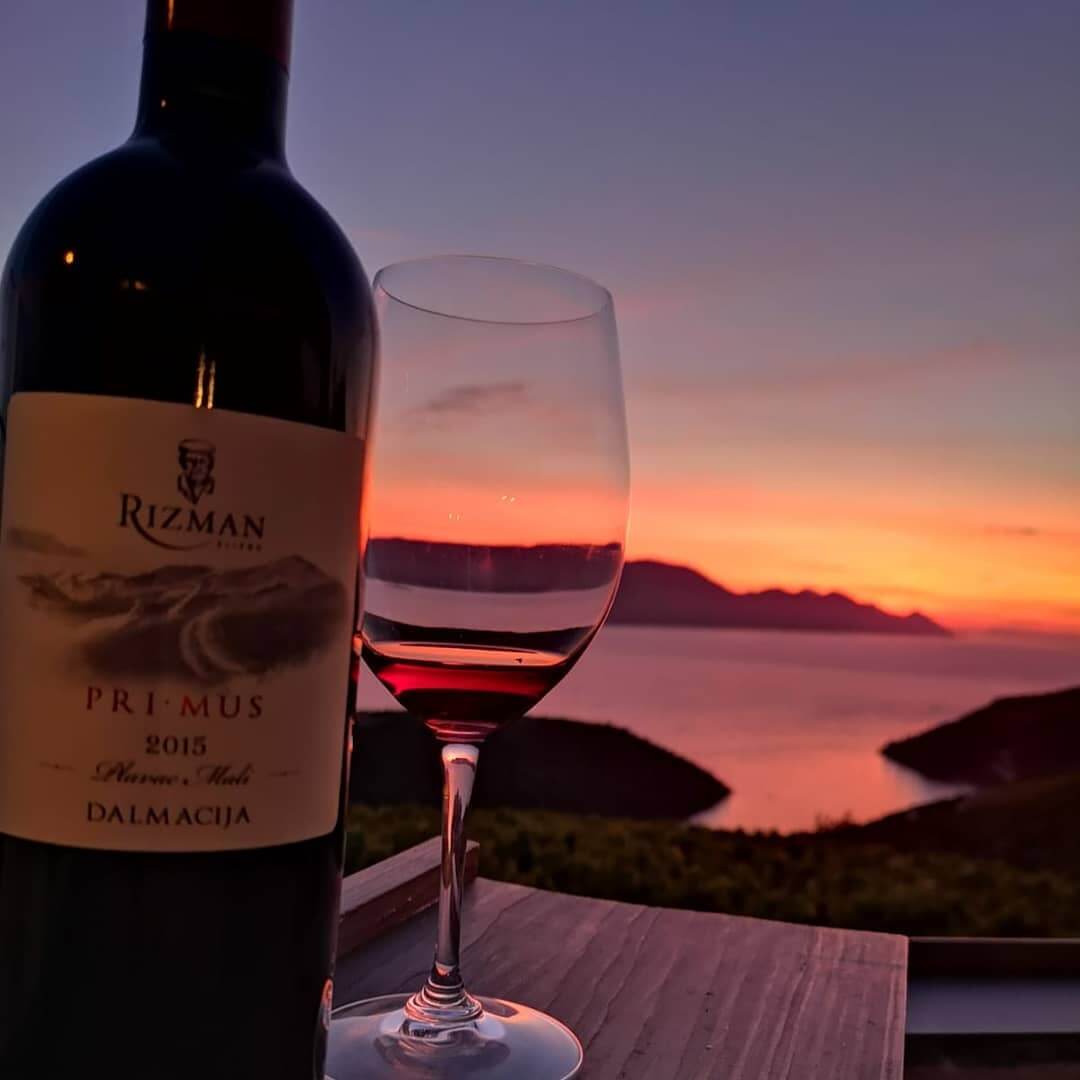
Rizman Winery | Rizman Winery Facebook
In case you aren't able to visit the winery, the Rizman rest stop is located just on the side of the Magistrala road on the way to Dubrovnik. But in case you do get to visit, you will not only be able to enjoy some of the best wines Croatia has to offer, but you'll also get to experience breathtaking views of Dubrovnik-Neretva County,
Terra Madre
One of the youngest wineries in the Dubrovnik-Neretva County, with the first vines planted only 13 years ago, in 2008. Since then the winery has gained the prestigious certification for their ideal conditions in an ecological way since the opening in 2013. Terra Madre wines have won a total of 16 prestigious awards, and the one that stands out, in particular, is the Dubrovnik Festiwine Gold Medal. "This award was especially dear to our hearts because it is practically the first competition in our county."
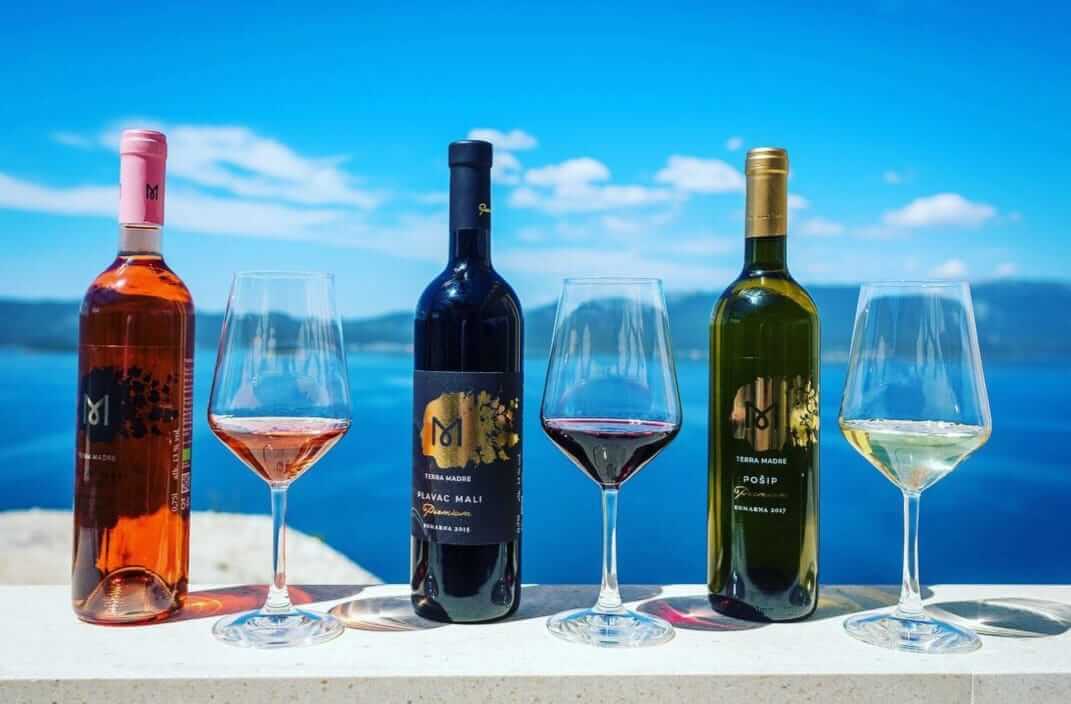
Terra Madre Winery | Terra Madre Winery Facebook
In 2019, Terra Madre won the Decanter silver medal for their Plavac Mali premium vintage 2016 production. The award came from a prestigious wine competition in London, UK. The winery itself is located in a stunning location with a view of the Adriatic sea. Nothing else matters when you're sipping on an award-winning glass of wine while looking out at the horizon.
Vina Deak
With its unique location in Opuzen, the family-owned winery only got started in the wine business about 10 years ago. Their vision is to combine the tourist offer with the autochthonous products of the Dubrovnik-Neretva region. With their location, Vina Deak offers a lot more than just wine tasting, they offer a whole experience. In 2020, Vina Deak received two awards for their prestigious wines, a silver and a bronze medal in the Decanter World Wine Awards!
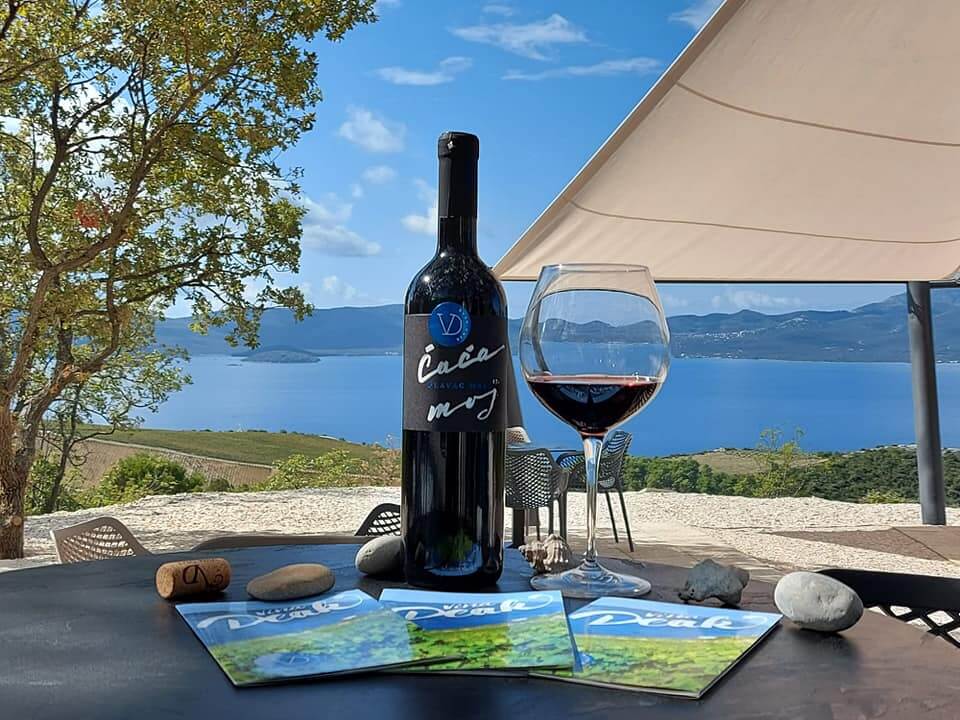
Vina Deak | Vina Deak Facebook
If you aren't able to visit the winery, make sure to stop at the Deak Wines Rest Stop on the way to Dubrovnik! Visitors have the ability to book daily excursions to explore the Neretva Valley and nearby towns, homemade olive oil tasting, photo safari down the river delta, picnics, and lots more. Their luxurious villa in Stolovi looking over the horizon is Boris Johnson's secret vacation hideaway!
Vinarija Edivo
Have you ever experienced an underwater winery? Located in Drače, a small village nearby Ston, Vinarija Edivo wanted to create a unique experience for wine lovers. They came up with the idea of immersing bottles and amphorae under the Adriatic Sea, around the Pelješac peninsula. Today, their creation is called The Sea Mystery, the first underwater winery.
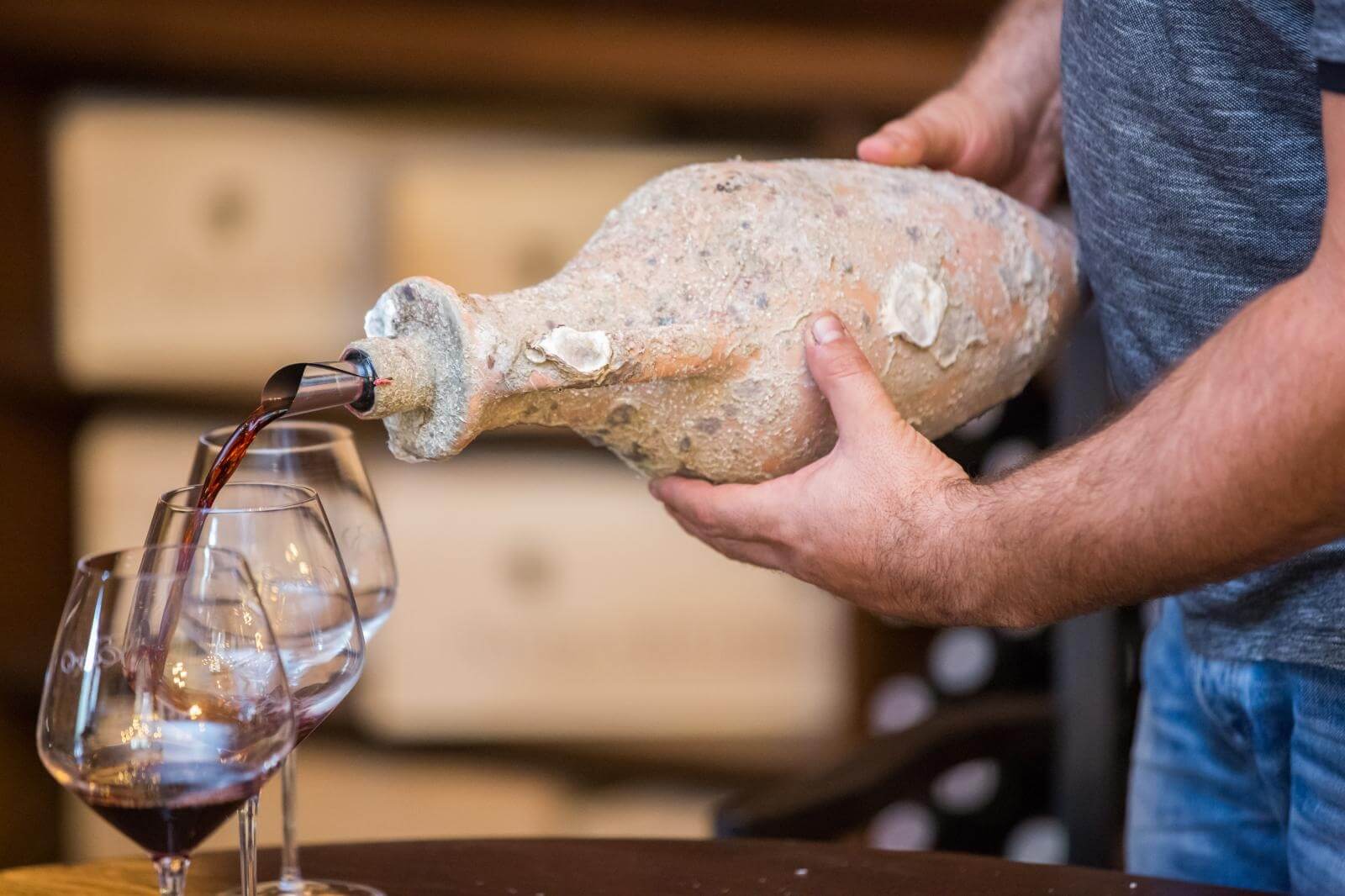
Grgo Jelavic/PIXSELL
Besides tasting the unique product of love, effort, and time, licensed scuba divers can also take a tour of the underwater winery to get the full and possibly once-in-a-lifetime experience! "Everything is pure Croatian product, one that you will want to take it with you: product with a story that belongs to our land, that people will definitely talk about."
For more on travel in Croatia, follow TCN's dedicated page.
Kvarner Wines in Spotlight: Two "Sparkling Kvarner” Workshops held in Zagreb
March 22, 2021 - Hotel Dubrovnik announced the 5th Salon of Sparkling Wines with two sparkling Kvarner workshops on Friday, March 19.
Fiuman reports that two sparkling wine workshops were held in front of loyal visitors: Sparkling Kvarner and Natural Sparkling (Croatia & Slovenia).
At the first workshop, six wines produced by the pét-nat method (fr. pétillant naturel) were presented at a "blind" tasting. With the leader dr. Sc. Nina Levičnik, the founder of the Salon of Sparkling Wines network and a big fan of "natural" sparkling wines, the participants learned what the terms pét-nat, méthode ancestrale, and col fondo have in common and how they differ from other methods.
The presenter emphasized the importance of "terroir" in wine production with this ancestral method. The Croatian representatives were Tomac, Šember, Veralda, and the Slovenian Atimo, Keltis, and Štemberger.
At the second workshop, participants learned that Kvarner is the third Croatian wine region in terms of sparkling wine production. The recently founded the Kvarner Wine Association which today has as many as 10 sparkling wine producers who were presented at the workshop under the auspices of the Kvarner Tourist Board. Sparkling wines in Kvarner are produced from the original varieties - žlahtina, belica, mast - charmat, and the traditional method.
The moderator, Dr. sc. Žarko Stilin, secretary of the Kvarner Wine Association, one of the loudest promoters of original Kvarner wine varieties, organizer of several wine events, the most important of which is the International Wine and Gastronomic Festival WineRi, spoke about the interesting and special features of Kvarner sparkling wines.
Participants tasted 10 sparkling wines: Maličić winery Šipun, Porin Estate Winery Katunar, Valomet PZ Vrbnik, Gospoja PZ Gospoja, San Marino Wine houses Pavlomir, Soubze catering and Nada shop, Stara Bakarska Vodica PZ Dolčina Praputnjak, Biser žlahtine Ivan Katunar - Plovanić vina and Ružić - OPG Ružić.
Workshop leader dr. sc. Žarko Stilin proudly stated that sparkling wines in Kvarner have a long tradition, and with the Kvarner Wine Association, the promotion will be even more visible through many activities, education on table culture, organization of round tables, lectures, and scientific conferences to promote Kvarner with the support of Kvarner Tourist Board.
The wine workshops were an introduction to other sparkling events ahead of the 5th Salon of Sparkling Wine Zagreb, on June 11, 2021, on the Oleander terrace of the Hotel Esplanade. The date has been targeted to meet the summer and the upcoming tourist season when the consumption of sparkling wines will be more frequent than usual and any promotion is welcome.
For more about lifestyle in Croatia, follow TCN's dedicated page.
Ponikve on Peljesac Becomes Protected Origin Designation of Croatian Wines
February 15, 2021 – Croatian wine gets another protection as Ponikve on Peljesac becomes a protected designation of origin for Croatian wines in the European Union.
As Dubrovnik-Neretva County reports, Ponikve, a wine-growing position on the Pelješac peninsula near the Municipality of Ston, has become a protected designation of origin for Croatian wines in the European Union.
On February 10, 2021, the European Commission published that "Ponikve" had entered the register of protected designations of origin and protected geographical origin (ZOI), becoming the 17th protected designation of origin for Croatian wines whose name is registered in the EU.
Along with Ponikve, protected designations of origin of Croatian wines in the EU are the Dalmatian hinterland, Dingač, Croatian Istria, Croatian Danube region, Croatian coast, Eastern Continental Croatia, Moslavina, Plešivica, Pokuplje, Prigorje-Bilogora, Coastal Croatia, Northern Dalmatia, Slavonia, Central and Southern Dalmatia, Zagorje-Međimurje, and Western Continental Croatia.
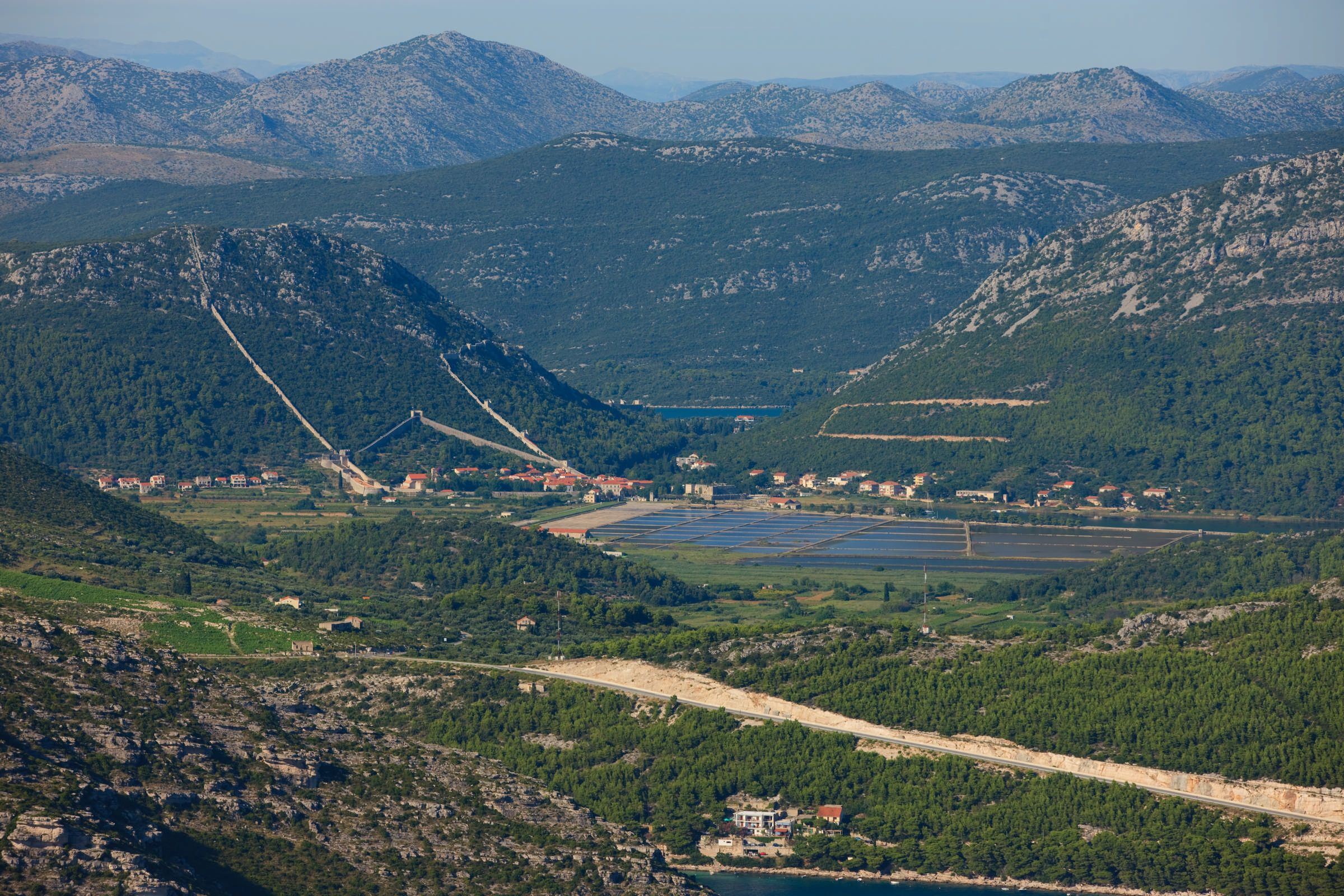
Ston / Photo: Romulić and Stojčić
The aim is to label the products, namely, wine, and highlight the name of the Ponikve locality following EU regulations, to easily identify the specifics of the vineyard locality.
The protected designation of origin covers the vineyard position of Ponikve located in the cadastral municipality of Boljenovići on the Pelješac peninsula near Ston, within the Pelješac vineyards in the Central and Southern Dalmatia subregion.
"Ponikve" stretches from the bay Prapratno in the southeast to the place Sparagovići in the northwest. On the north side is Ilija hill, and on the south is the state road Ston-Orebić. Ponikve is located in a hilly area with some smaller valleys and fields. The relief is typical karst.
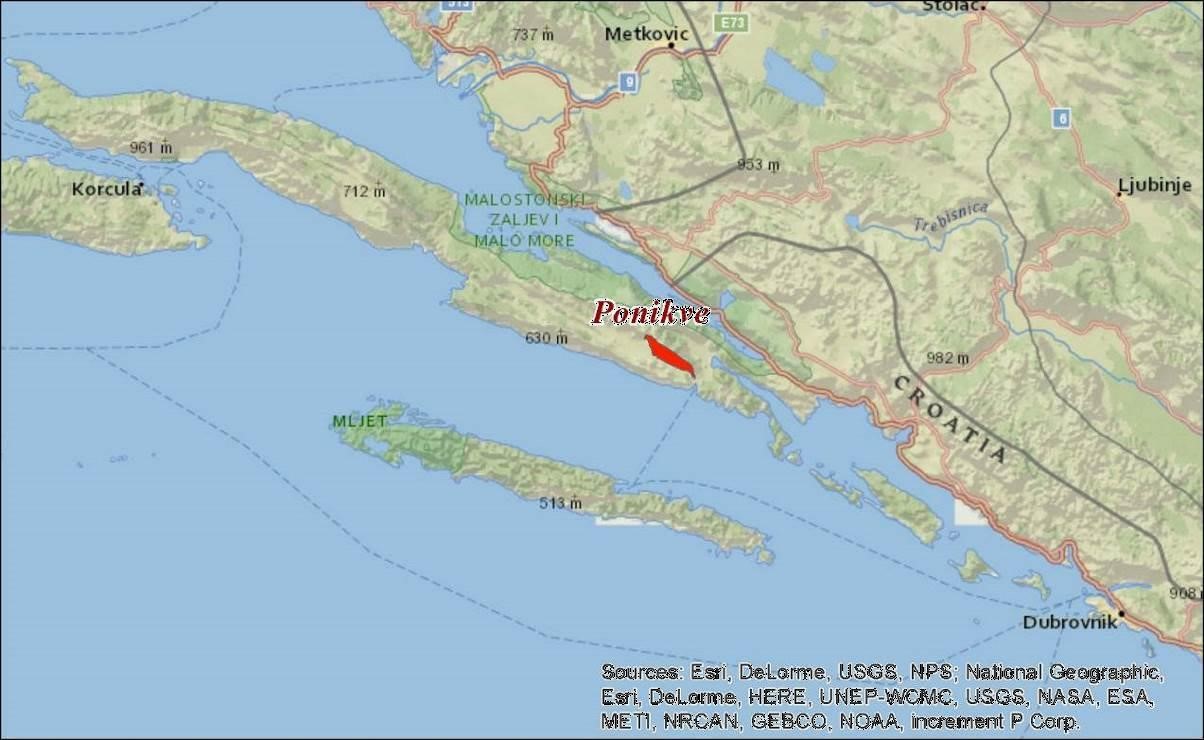
The ZOI "Ponikve" area is located on the Pelješac peninsula near the Municipality of Ston and is marked in red
The whole area is an outstanding example of the traditional way of raising vineyards with terraces and dry stone walls of attractive landscape architecture and view. The viticultural position of Ponikve is one of the most suitable terrains for growing vines on Pelješac, a peninsula well-known for its rich tradition of growing vines. Carefully selected places in Milo, Crnjava, at the foot of the hill Stari Grad, and all-day sunbathing give exceptional quality wine.
Apart from good wines, Ponikve is also known for excellent olive oil.
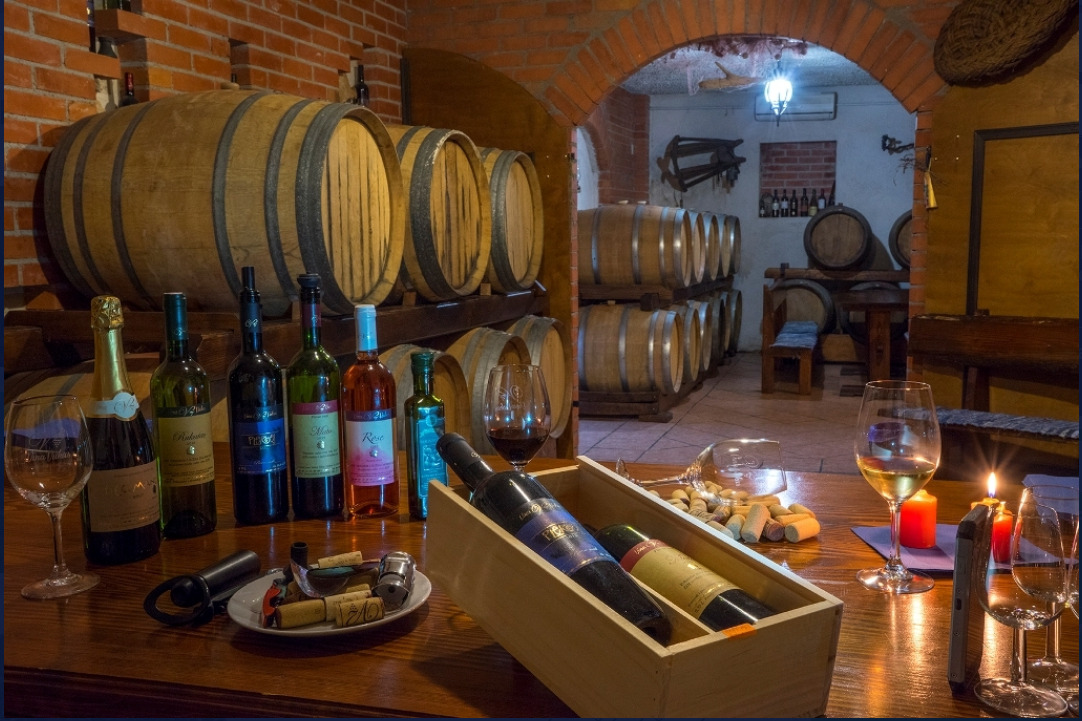
Ston.hr
Recognized black and white grape varieties are Plavac mali, Maraština, and white Pošip. The maximum yield per hectare is 11,000 kilograms or 6,600 liters of wine per hectare, according to the document "Product specification for the protected designation of origin Ponikve" by the Institute for Adriatic Crops and Karst Reclamation from Split.
The protection process for the locality Ponikve lasted for more than seven years, since 2013. The "Pelješac Wine Routes" Association was the project holder, while the development was entrusted to the mentioned institute. The Municipality of Ston, Dubrovnik-Neretva County, and the County Chamber of Commerce supported the Ponikve Site Protection Study production, reports Hina.
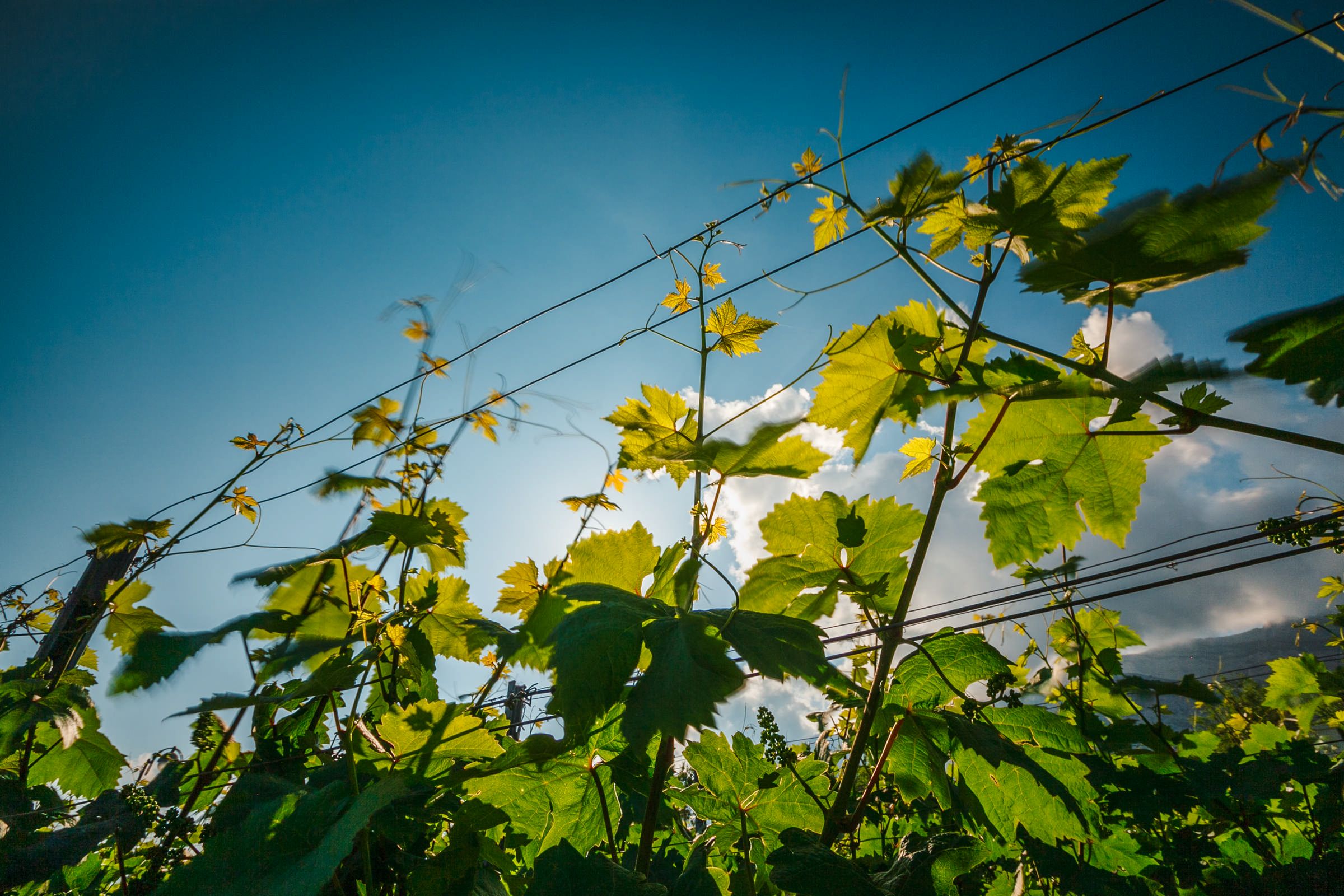
Photo: Romulić and Stojčić
To read more lifestyle news from Croatia, follow TCN's dedicated page.
Vinart Grand Tasting: Biggest Wine Event in Croatia to be Held in Spring 2021
January 29, 2021 – Winemakers are delighted as it's announced that the Vinart Grand Tasting, the most important business wine event, will take place in the spring of 2021.
As Turizam24 reports, the Vinart Grand Tasting will be held on April 30 and May 1, 2021, in Zagreb's Lauba. The organizer, the company Vinart, moved the fair's date from the beginning of March to the beginning of May due to the uncertainty of the epidemiological situation and the duration of anti-epidemic measures.
As a reminder, last year's Vinart Grand Tasting was the last professional wine fair in Europe. It was held on March 6 and 7, 2020, just before the first lockdown, while many details about the COVID-19 virus were unknown.
"It was uncertain until the last second, and in the weeks before the fair itself, we practically didn't sleep because of worries. We prepared the program, and after the fair, we organized a study trip to Croatian wine regions for a group of about twenty important European and American journalists. We invested a considerable amount of money, hoping that we would make a big step to recognize Croatian wines and winemakers globally, and everything was so risky and uncertain. In the end, only three journalists canceled our trip, and others came and were delighted with the offer and quality of Croatian wines. We did everything in our power to eliminate the risk of transmitting the virus," says Saša Špiranec, director of Vinart.
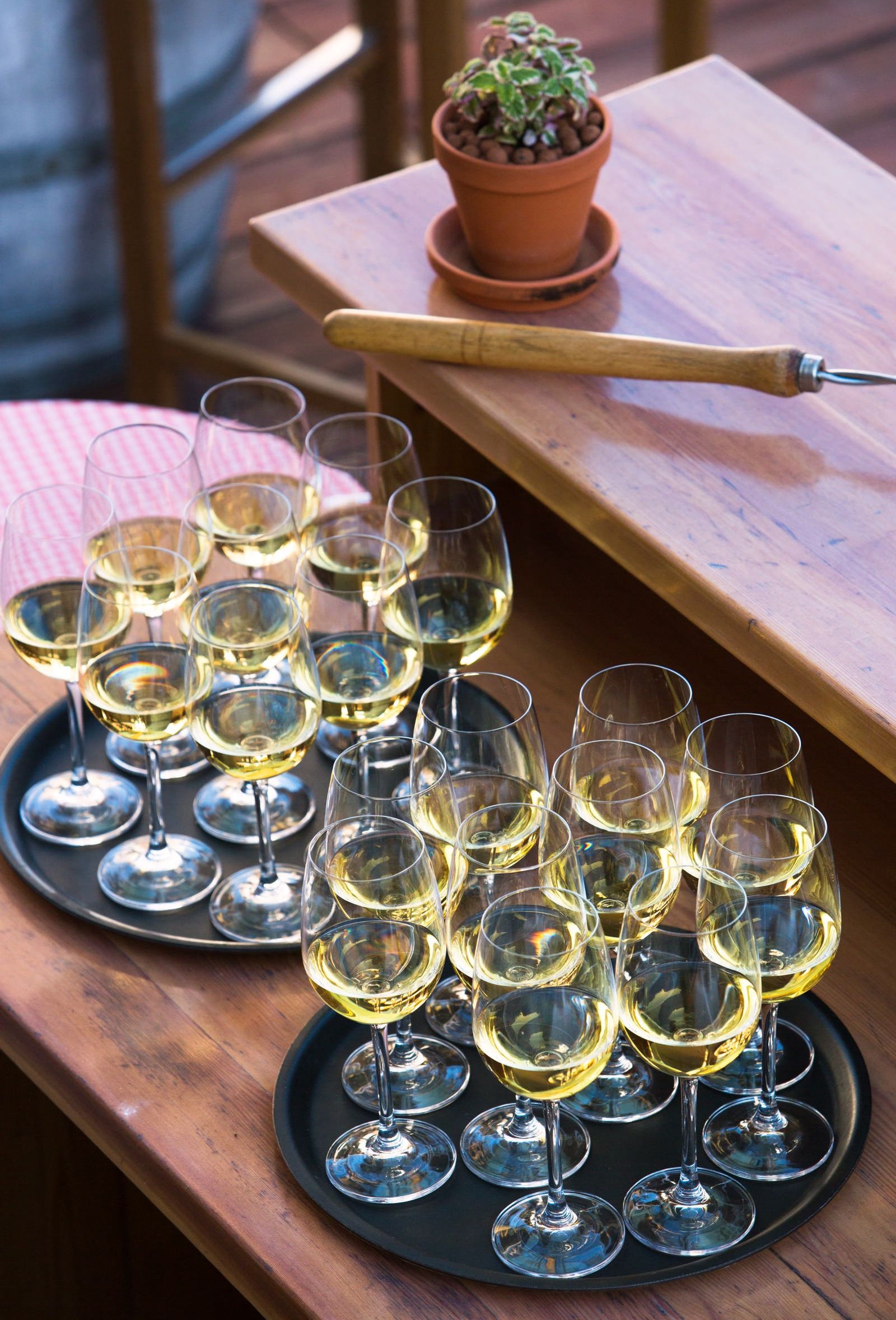
Wine tasting / Copyright Romulić and Stojčić
At last year's fair, there was no information that anyone had become infected. From that experience, they are ready to boldly enter into the preparation of this year's edition of the fair.
If the economy doesn't restart in May, we can say goodbye to winemaking
On this occasion, Špiranec answered questions about the situation in winemaking after the pandemic 2020. As expected, the autumn wave caused the most significant damage to this branch of the economy, extremely important for the tourism sector.
"Judging by the comments we received from winemakers, last year's drop in turnover was more than obvious. Different wineries have different experiences, but the average should be between 20 and 30 percent drop overall. The year's start was a shock, and sales stalled, but a good spring and early summer made up for that decline. The second, autumn wave did more damage that was only partially offset by sales in December when many winemakers had good results in direct sales due to gifts and increased household consumption. If such problems remained in 2021, they would surely become insurmountable for many wineries. If the situation after the Easter moves towards full normalization, then most wineries will recover," said Špiranec, who explained the chosen date in the still uncertain first part of 2021.
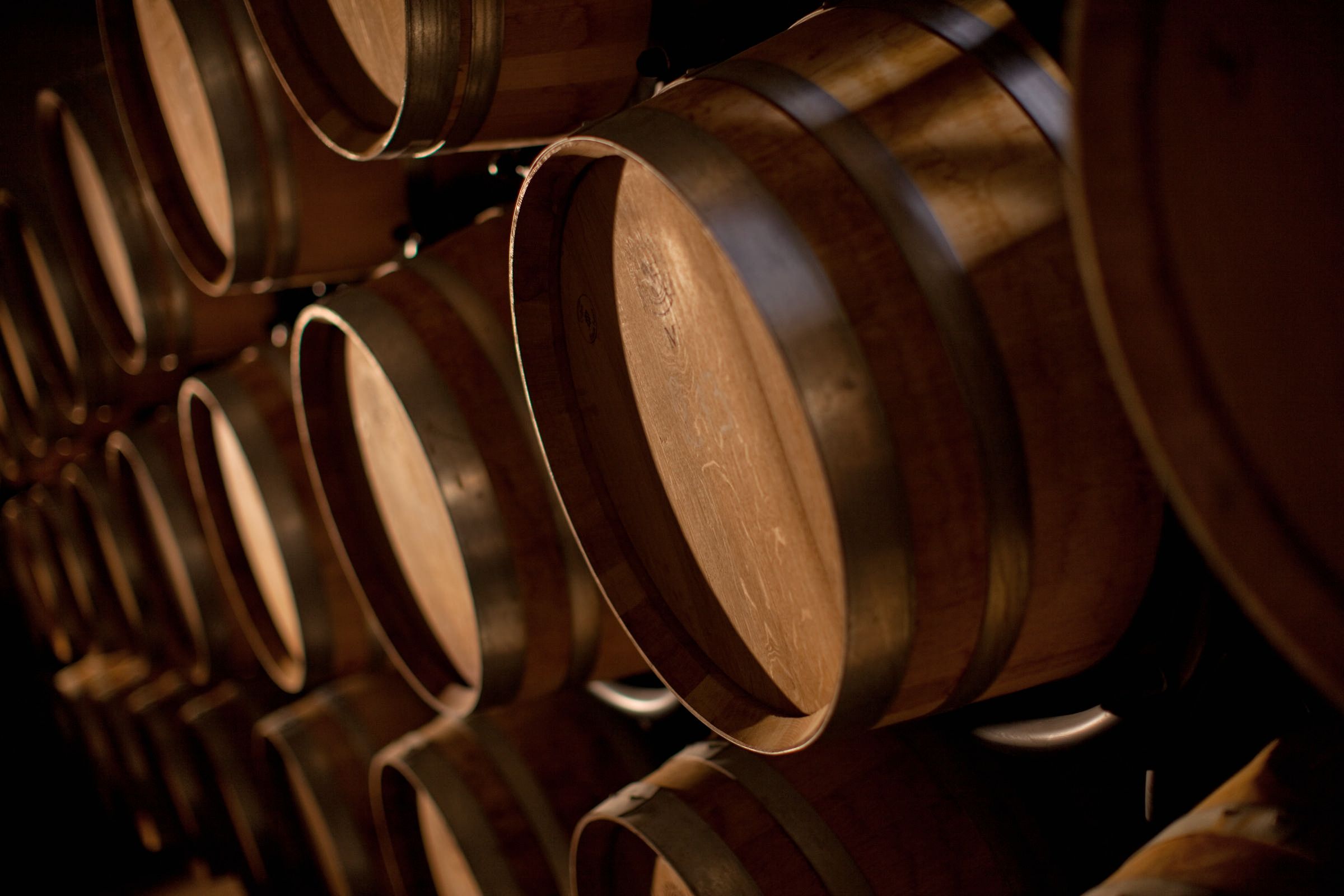
Copyright Romulić and Stojčić
"We have chosen dates when spring will already be in full swing. The days are long and sunny, and we believe that in the meantime, the measures and vaccination will significantly reduce the risks. We think May is the last moment for normalization, regardless of the circumstances with COVID-19, and that is why we chose the first days of May for the fair. If the economy does not start working normally in May, we can say goodbye to winemaking as its branch," concluded Špiranec, the leading Croatian expert in winemaking.
This announcement speaks best about the consequences of a pandemic. They hope that the situation will normalize after Easter. In that case, we can still expect the recovery of most stakeholders on the wine scene.
2021 is crucial for winemaking
Winemakers and wine business people are delighted by the announcement of the Vinart Grand Tasting.
"The capacity, which is further limited this year, is almost full after the first week of opening the applications. Winemakers and their customers send us numerous messages that they cannot wait for the fair and the start of activities and wine events. Now, things that they used to complain about, like too many fairs and trips, seem to them to be a blessing compared to this past year of passively waiting and staring into space," announces Špiranec.
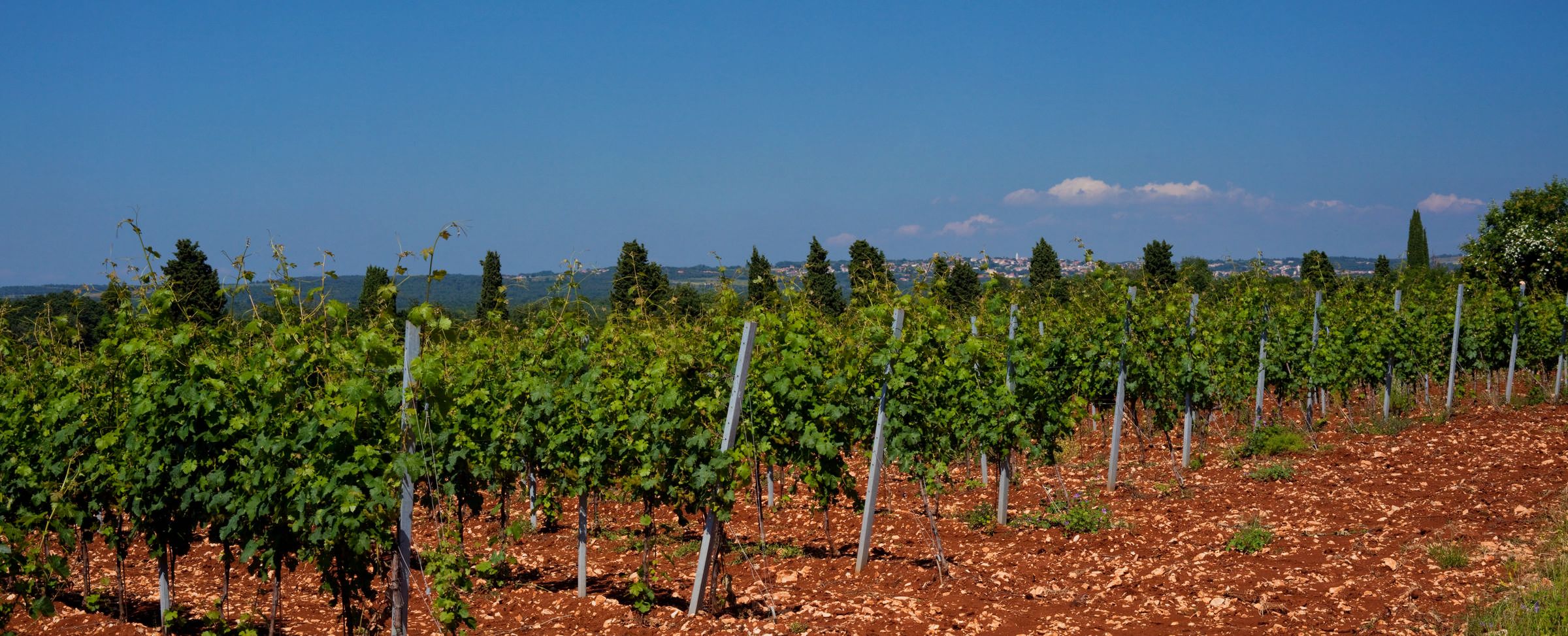
Vineyard in Istria / Copyright Romulić and Stojčić
It is evident that this year is crucial for winemaking. Without the opening and launch of the economy in the spring, there will be no winemaking. It remains to be seen how the situation will develop by May, but any such announcement and event that gives hope that the recovery will begin soon is optimistic. For winemakers, as well as for caterers, it is necessary to start economic activities no later than Easter. Otherwise, we will have a total collapse.
To read more about lifestyle in Croatia, follow TCN's dedicated page.
From Price to Status: How Much do Croats Value Good Croatian Wine?
January the 21st, 2021 - Croats might well be famous lovers of a good drop of wine, but just how much are they willing to spend on a good Croatian wine? A study reveals all.
As Novac/Jozo Vrdoljak writes, women prefer red wines, sparkling wines and rosé wines significantly more than men. This was shown by a study of sociodemographic and individual characteristics of Croatian wine producers and consumers, first conducted in Croatia. The research was conducted by doctors of science, economist Djuro Horvat, psychologist Katarina Sokic and agronomist Robert Brkic.
Although a total of more than half of Croatia's consumers prefer white wines, a third opt for red, while rosé and sparkling wines are preferred by two to five percent of consumers, it is different for women: it is interesting that 67 percent of men and 40 percent of women prefer white, and 42 percent of women and 26 percent of men red wines. Women are more frequent consumers of rosé and sparkling wines, while an equal number choose predicate wines - 3.5 percent of men and 3.6 percent of women.
"It's likely that women have a different choice because of the fuller, stronger and sweeter, often fruity taste that these wines have. White wines are perceived as sour and harsher, which, of course, often doesn't correspond to the truth, but such a perception is common," explains Katarina Sokic.
More educated and wealthier consumers
Within the project entitled "The influence of motivation, preferences and emotions of producers on success in wine production, branding and marketing", whose holder is the Effectus study of finance and law - University of Zagreb, a study of sociodemographic and individual-emotional and motivational characteristics of good Croatian wine producers and consumers was undertaken. The study of wine consumers included 570 participants: 318 men and 252 women.
The frequency of consumption shows that most participants consume wine several times a week, and a fifth of them doing so on a daily basis. In terms of frequency of consumption, there are significant gender differences among everyday consumers: 29 percent men and only eight percent women.
Sokic notes that in addition to the demographic, socioeconomic and psychological characteristics of wine consumers, it is very important to establish contextual factors of consumption, because in this way the offer can be adjusted to consumer needs, "especially because wine consumption is far more emotional than it is rational. According to our results, 62 percent of respondents cannot imagine festive moments without drinking wine. Almost as many think that wine improves mood and reduces tension. It is obvious that consumers associate wine with emotions, both positive and negative ones. For example, a third of them believe that in a state of sadness and disappointment it is best to drink a glass of wine. Finally, wine is sung about in many sad, love songs,'' points out Katarina Sokic.
The research showed that more than half of wine consumers are highly educated. Wine consumers, as many as 70 percent of them, mostly rate their financial situation as mediocre, and as many as 24 percent perceive it as being somewhere above average.
Consumers and their preferences
There is a significant positive association between belonging to a particular wine region by birth and preference for a particular wine region. Consumers, 33 percent of them, are most inclined to the good Croatian wines of Slavonia and the Croatian Danube region, while for 40 percent of the participants the geographical origin of the wine isn't important. The preference of Slavonian wines is also noticeable among those consumers who belong to other wine regions by birth. It is interesting that only those consumers - 74 percent of them - who by birth belong to the region of Slavonia and the Danube region prefer good Croatian wines from this region, while the percentage of consumers who prefer wines from other Croatian wine regions to which they belong by birth is much lower.
"The price is extremely important for making business decisions of strategic and tactical importance for good Croatian wine producers. Having a balanced price-quality ratio is a key factor in choosing wine for 34 percent of respondents, so we can conclude that price is very important in today's market economy and for consumers. Significantly, 60 percent of the respondents don't regret spending money on good Croatian wine, which means that the price of wine must be consistent with its basic features and characteristics, strongly correspond to its quality, design, packaging and faithfully reflect the productivity of wine producers through the cost, and the end result is consumer satisfaction,'' Horvat points out.
Socio-demographic factors explain the importance of the percentage of variance in the emotional experience of drinking wine and attitudes towards good Croatian wine, namely 13 percent relates to experiences and 17 percent relates to attitudes.
General sociodemographic factors such as age and gender are significant predictors of the emotional wine drinking experience that links wine consumption to comfort and relaxation. Age, place of birth, status in terms of assets and preferences towards certain wine regions are also significant predictors of attitudes towards good Croatian wine.
For the latest travel info, bookmark our main travel info article, which is updated daily.
Read the Croatian Travel Update in your language - now available in 24 languages.
Vina Laguna Wins Three Golds at Prestigious Italian Competition
As Poslovni Dnevnik writes on the 27th of October, 2020, this year, the wines of Istria's much loved Agrolaguna - Castello Festigia 2017, Riserva LV 2016 and Cabernet Sauvignon Festigia 2017, returned from Italy, more precisely from the competition "Emozioni dal Mondo: Merlot and Cabernet Insieme'', with gold medals. Vina Laguna's Castello Festigia 2017 also won the award for the best wine from Croatia.
"It is a great honour for the second year in a row to win the award for the best wine from Croatia at such a prestigious competition, whose focus is on the black varieties Merlot and Cabernet Sauvignon and their blends. These golds have an even greater shine for us, considering that the award-winning wines from the 2017 vintage of the Festigia line have only recently been placed on the market. We're extremely proud of every award we've received. They are one of the indicators of the continuity of the quality of our wines,'' said Milan Budinski, director of winemaking and production of Agrolaguna, which produces Vina Laguna.
During the three days of the competition, which stretched from October the 15th to the 17th, more than 152 samples from 12 countries were tasted in the beautiful Italian city of Bergamo. In addition to the gold-awarded Agrolaguna wines, the jury was especially impressed by the black blend Castello Festigia (2017), meaning that this is the second year in a row that in which wine from Agrolaguna has been declared the best wine from Croatia.
It is a black blend that includes international varieties, Merlot, Syrah, Cabernet Sauvignon and Cabernet Franc, but the wine exudes an Istrian spirit. It best shows all the characteristics of what are considered to be excellent Istrian red wines: elegance, complexity, softness, and with a deep and vibrant colour, accompanied by the freshness of the special Istrian temperate, climate and the warmth of Istrian red wine.
"Emozioni dal Mondo: Merlot and Cabernet Insieme" is otherwise one of the most prestigious European oenological competitions and is the only one in the world that focuses on Merlot and Cabernet and their blends, and is held under the auspices of the prestigious international organisation OIV - the International Organisation of Vine and Wine.
For the latest travel info, bookmark our main travel info article, which is updated daily.
Read the Croatian Travel Update in your language - now available in 24 languages
Croatian Wine Envelope Funds for 2020 Almost Used Completely
As Morski writes on the 17th of October, 2020, as of October the 15th, 2020, another "wine" financial year ended. Out of the total available 10.8 million euros for 2020 within the National Wine Aid Programme, the Agency for Payments in Agriculture, Fisheries and Rural Development paid out 10.1 million euros to Croatian winemakers, which means that the percentage of Croatian wine envelope utilisation is higher than ever before, standing at almost 94 percent, reports the Ministry of Agriculture.
From the first programming period until now, the coverage has been expanded, ie the number of measures available to users of the Croatian wine envelope has significantly increased. The implementation framework and procedures have been simplified so that the approval and contracting process can be faster and easier. More specifically, in the new programming period, in addition to the existing three measures, a new measure of Information in EU member states was introduced, as was an upgrade of the existing Promotion measure on third country markets, with an aid intensity of 80 percent of the maximum eligible costs.
In the measure Restructuring and Conversion of vineyards, the aid intensity has been increased from the previous 50 percent up to 75 percent of the level of maximum eligible costs, the compensation of loss of income for vineyards has been introduced for a period of 3 years.
In the extremely challenging period of 2020 in which we're still knee deep, and due to the crisis caused by the COVID-19 pandemic, two new intervention measures were introduced: The Distillation of wine in crisis cases and Support for the crisis storage of wine, both of which are now nearing completion. At the same time in this period, due to special circumstances and disturbances caused by the pandemic, all measures were increased, as were their respective aid intensities. Despite all of the less than favourable circumstances, the new measures, the successful implementation of contracted projects and the processing of applications have contributed to the higher utilisation of the Croatian wine envelope when compared to all previous years.
Through the National Programme for Assistance to the Wine Sector, an annual fund of 11 million euros has been provided from the European Fund and the State Budget of the Republic of Croatia in the planned five-year programming period, ie a total of more than 55 million euros for development projects in the wine and viticulture sector.
For the latest travel info, bookmark our main travel info article, which is updated daily.
Read the Croatian Travel Update in your language - now available in 24 languages
Meet Croatian Premium Wine Imports, Bringing Croatian Wines to United States
September 20, 2020 - Started by Mirena Bagur, Croatian Premium Wine Imports brings Croatian wines to American addresses.
Wines from southern Croatia are now on dinner tables in America!
Namely, Slobodna Dalmacija reports that the American company Croatian Premium Wine Imports, Inc. (CPWI), based in Boston, received a federal license to import Croatian wines to the United States, starting with wines from the Komarna vineyards, wineries Rizman, Terra Madre, and Volarevic, and continuing with wines from Konavle from the local winery Crvik, which completes this seemingly unusual wine story.
CPWI is interested in indigenous wines such as Plavac Mali, Posip, Zinfandel, Tezor, and wineries in the south that produce these red, white, and rosé wines.
At a time of the coronavirus pandemic and great economic uncertainty, beautiful entrepreneurial stories like the one told by the Croatian wine ambassador to the USA, Mirena Bagur, who was born in Metkovic, are worthy of attention and admiration. The Crvik winery from Konavle, which is proud of its centuries-old tradition of wine production, has entered the circle of Croatian wineries whose wines have recently been successfully sold in the United States.
It is an internationally awarded wine Tezoro (silver at Decanter, silver at the International Wine Challenge, gold at Vinistra and Sabatina), which is obtained from the indigenous variety Dubrovnik Malvasia, the first grape variety mentioned in the Dubrovnik archives in the 14th century.
Much credit for this goes to Mirena Bagur, who, together with her husband Win A. Burke, an IT entrepreneur, runs the Croatian Premium Wine Imports company to import and distribute wines in the United States. They started with the wineries of the association K7 from Komarna. They recently agreed to cooperate with Testament near Sibenik, Marlais from Peljesac, and the Crvik winery, as the first Konavle winery.
Thus, through an online shop, which sends wines to most states, you can buy well-known varieties from southern Croatia, such as Plavac Mali, Dingac, Tribidrag, Posip, Babic, Debit, and Dubrovnik Malvasia. In the USA, quality Croatian wines are very well accepted, says Mirena.
"Wine connoisseurs and lovers in America give priority to quality, and all the reviews of quality experts that come to us are excellent. Younger generations want to hear new wine stories from around the world, so there is a whole new category, the so-called adventure wines, and here our wines fit perfectly. We are in constant contact with wine lovers, and we listen to comments, so this year, we are expanding our wine inventory to other Croatian wine regions as well," Mirena said.
Winemaker Petar Crvik says this is a great time to break through into wine production.
"Every year, tourists from all over the world come to our winery. It is often the Americans who ask us if they can get our wine in the United States. I am glad that our efforts and authenticity have been recognized, and I sincerely hope that more Croatian winemakers will start exporting because this is a huge opportunity for our winemaking," says Crvik.
Although Croatia still imports much more wine than it exports, the trends are still hopeful: a few years ago, imports decreased, and production and exports increased. Initiatives like this can definitely help the Dubrovnik-Neretva County, but also the whole of Croatia, find its place on the wine map of the world.
"As you know, we started cooperation with winemakers from Komarna, and since I am from Metkovic, it was relatively easy for us to form a partnership with people we know and have mutual respect. However, from the very beginning, we planned to include wines from all over Croatia. Logically, the first expansion was within the Dubrovnik-Neretva region because last year, we visited wineries in that area," Mirena pointed out.
"Apart from the top quality wines made from indigenous varieties, which is our focus, one of the reasons why we quickly included Crvik and Marlais wineries is that they understand how to satisfy the desires of American wine lovers who come to their tasting rooms. So selling their wines online went very fast. In particular, we have several former visitors to Crvik who contacted us at least once a week during the summer to see if Tezoro had arrived at our online warehouse. I don’t think there’s a better story than that," Mirena says proudly of her wine success.
"The development of online sales has always been planned, but online shopping is quite complicated due to the alcohol law in America. Still, since Win Burke is an expert in software solutions, this was feasible for us in a relatively short time with his experience. We started building an online store in 2019 and started to test sales in early 2020. Just when most restaurants were in the status quo due to the corona crisis, and direct sales in the wine sector more or less stopped, online demand for Croatian wines began, and were delivered to the home addresses of the customers," said Mirena.
"Without investments in the export of Croatian wines by the ministry, chamber, or winegrowing associations, success in the wine sector cannot be expected," concluded Mirena Bagur, who emphasizes that 50 indigenous wine labels from all over Croatia are available in the USA today.
You can read more about Croatian Premium Wine Imports here.
For the latest travel info, bookmark our main travel info article, which is updated daily.
Read the Croatian Travel Update in your language - now available in 24 languages
Wine Stars Light the Way for Croatian Wine Lovers
September 6, 2020 - English-speaking lovers of Croatian wine may find it a challenge to locate the types of wine scores and quality ratings that seem to saturate the rest of the wine world. Programs for wine evaluation do exist in Croatia—the first of them was Vinske Zvijezde, or Wine Stars, launched in 2013. This writer helped judge a recent Vinske Zvijezde competition on Hvar to see how the program works, and reveal the top Bogdanuša, Bogdanuša blends and Plavac Mali on the island.
Each year, Vinske Zvijezde evaluates about 200 wines in small tastings. The judges, all volunteers, are enologists, sommeliers, wine journalists, and people in the wine trade. Judges are aware only of the category of wine being tasted, the vintage and the level of alcohol, and are responsible for scoring the wines for their appearance, aroma and flavor, with the most points awarded for “quality” of aroma and flavor. The judges’ scores are averaged to arrive at the final score for each wine.
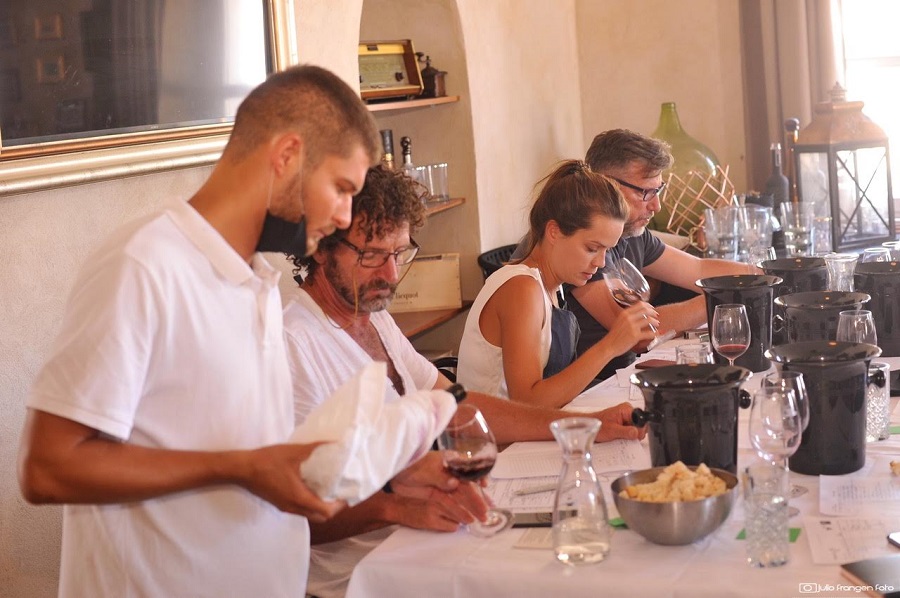
(The next sample is poured for judges (from left) Miro Štec, Eva Krištof and Saša Zec. Photo: Julio Frangen)
The key to Vinske Zvijezde is that the competition is open to all wines on the market in Croatia. It is intended “to present the wines that a customer can find in a wine shop,” according to co-organizer Marija Vukelić of Zlatne Riječi, a wine promotion firm in Zagreb. Saša Zec, an enologist and sales and marketing specialist who organizes the tastings with Vukelić, emphasizes, “We don’t depend on any wine producer here in Croatia. Most important is that we are independent and earnest.” Enologist Eva Krištof participated simply “because I love Hvar and Hvar wines.” A former Hvar resident, she brings a keen local wine knowledge to the judging.
The results of each tasting are announced (in Croatian) on the organization’s Facebook page. Wines with scores of 90-100 points are presented with award certificates at a ceremony at the end of the year. Last year’s presentation was at the Vino.com wine festival in Zagreb.
Vinske Zvijezde was founded by three wine journalists—Vitomir Andrić of Večernji list newspaper (retired); Ivo Kozarčanin, an editor at 24sata newspaper; and Željko Suhadolnik, editor-in-chief of Svijet u čaši magazine. Svijet u čaši was the first wine magazine in Croatia, and the first to include ratings.
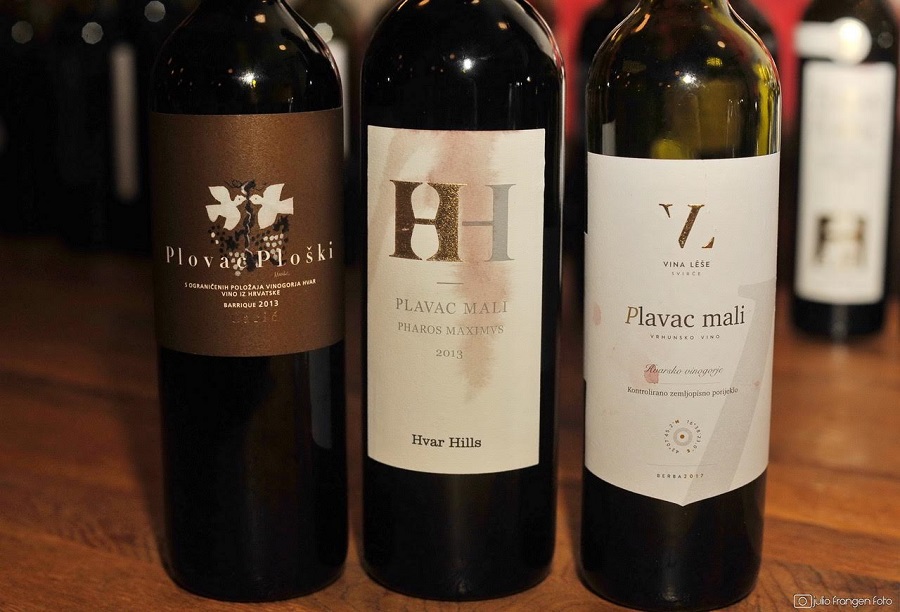
The top-scoring wines of the tasting of August 29 in Jelsa:
Bogdanuša (from 6 submissions)
- Pavičić Vina 2019 (48kn)
- Vina Carić 2019 (50kn)
- Zlatan Otok 2019 (50kn)
Bogdanuša blend (from 6 submissions)
- Zlatan Otok Cuvée 2018 (50kn)
- Vina Carić Cesarica 2019 (55kn)
- Tomić Beleca 2019 (70kn)
Plavac Mali (from 20 submissions)
- Vina Carić Plovac Ploški Barrique 2013 (130kn)
- Hvar Hills Pharos Maximus 2013 (200kn)
- Vina Leše Plavac Mali 2017 (60kn)


